 | « Back to article | Print this article |
A sudden surge in wealth because of stock market gains after the pandemic could be one of the factors behind the relatively lower share of philanthropy in total wealth.
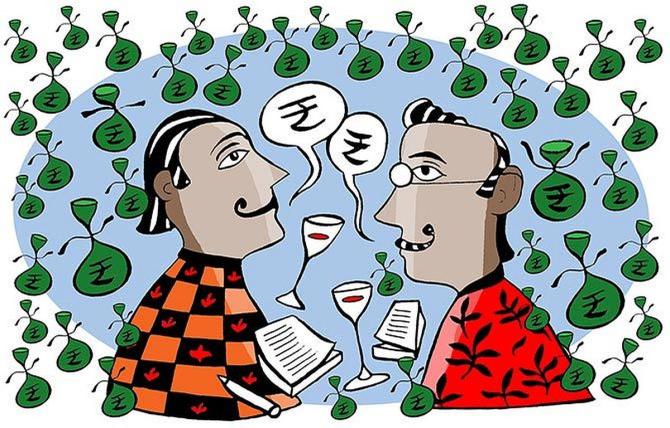
Those worth Rs 50,000 crore (Rs 500 billion) or more gave away 0.09 per cent of their wealth in the financial year 2020-2021 (FY21), shows data from the India Philanthropy Report 2022, a joint study by global consultancy Bain and Company and non-governmental organisation Dasra.
This is much lower than the UK (0.44 per cent), China (1.48 per cent) and the US (2.52 per cent). The trend is similar for those in other wealth brackets as well (chart 1).
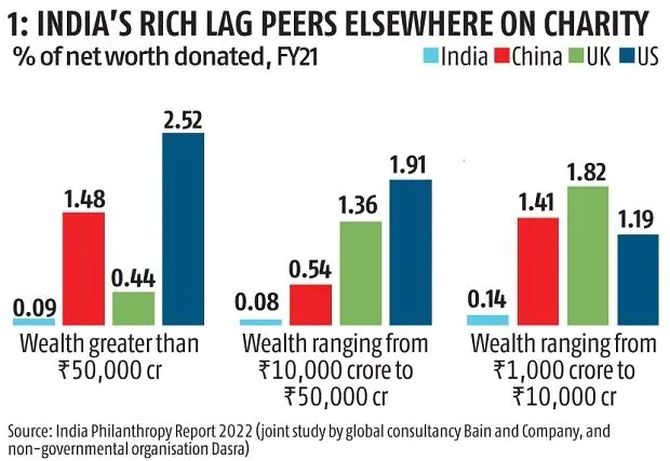
A sudden surge in wealth because of stock market gains after the pandemic could be one of the factors behind the relatively lower share of philanthropy in total wealth.
But the data also shows that ultra high net-worth individuals (HNI) giving declined at an annual rate of 5 per cent between FY15 and FY21.
All other domestic givers saw an increase during this period (chart 2).
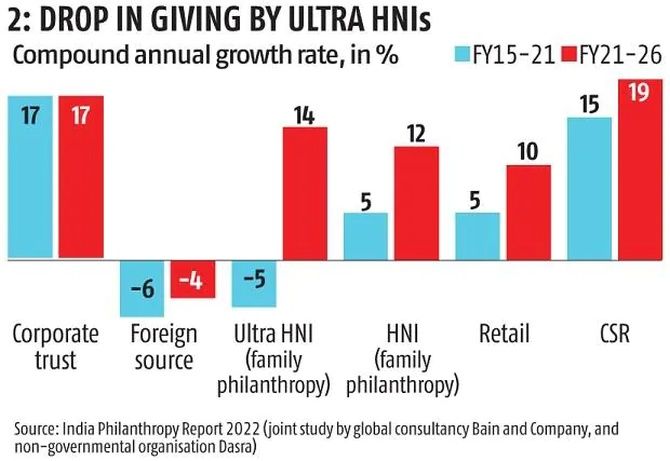
This has coincided with the government making it mandatory to give away 2 per cent of profits under corporate social responsibility (CSR) spending from FY15.
Many of the wealthy may well be giving more through their companies rather than in their individual capacity.
Indeed, even retail giving has become more formalised (chart 3).

Overall CSR allocations appear to have taken a hit during the pandemic even as they became skewed towards certain sectors (charts 4, 5).
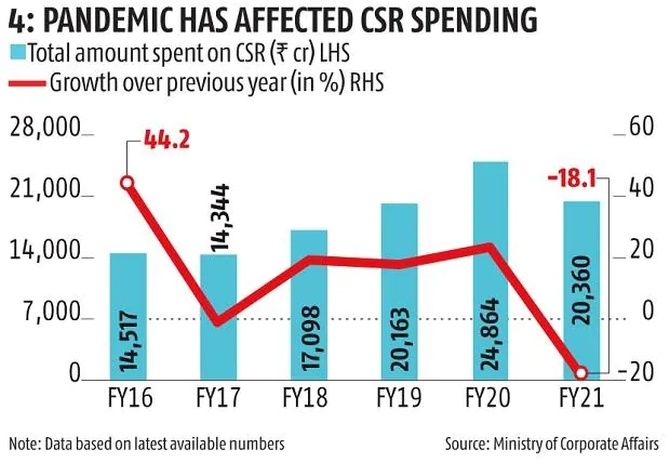
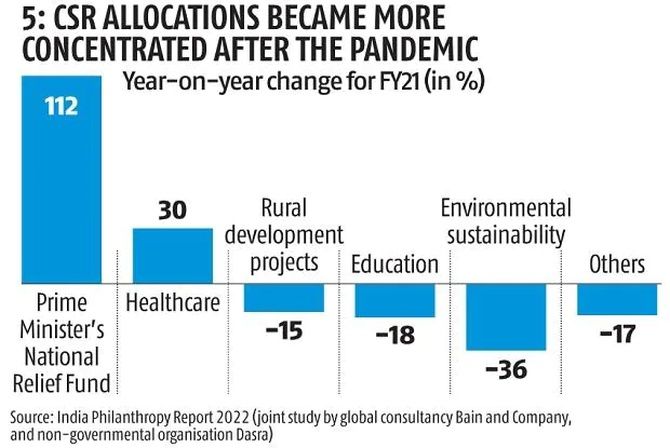
There was already a trend of spending going to the more developed states rather than the less developed ones.
Industrialised states such as Maharashtra are more likely to have companies sizeable enough to spend on CSR.
An earlier Business Standard analysis showed that companies spend CSR funds in their own (developed) backyard, compared to governments, which allocate more to poorer regions.
The potential for votes from backward regions creates a natural incentive for reallocation.
Government spending is also subject to greater scrutiny than spending by private players.
The top ten states got 44 per cent of the FY21's overall CSR spend (chart 6).

The philanthropy report suggests a Rs 8 trillion shortfall in expenditure required to meet development goals for FY21, citing Niti Aayog estimates.
The gap is expected to grow to Rs 10 trillion by FY26.
Whether CSR or direct government taxation is a better way to meet this gap may be a debate worth having.
Feature Presentation: Rajesh Alva/Rediff.com